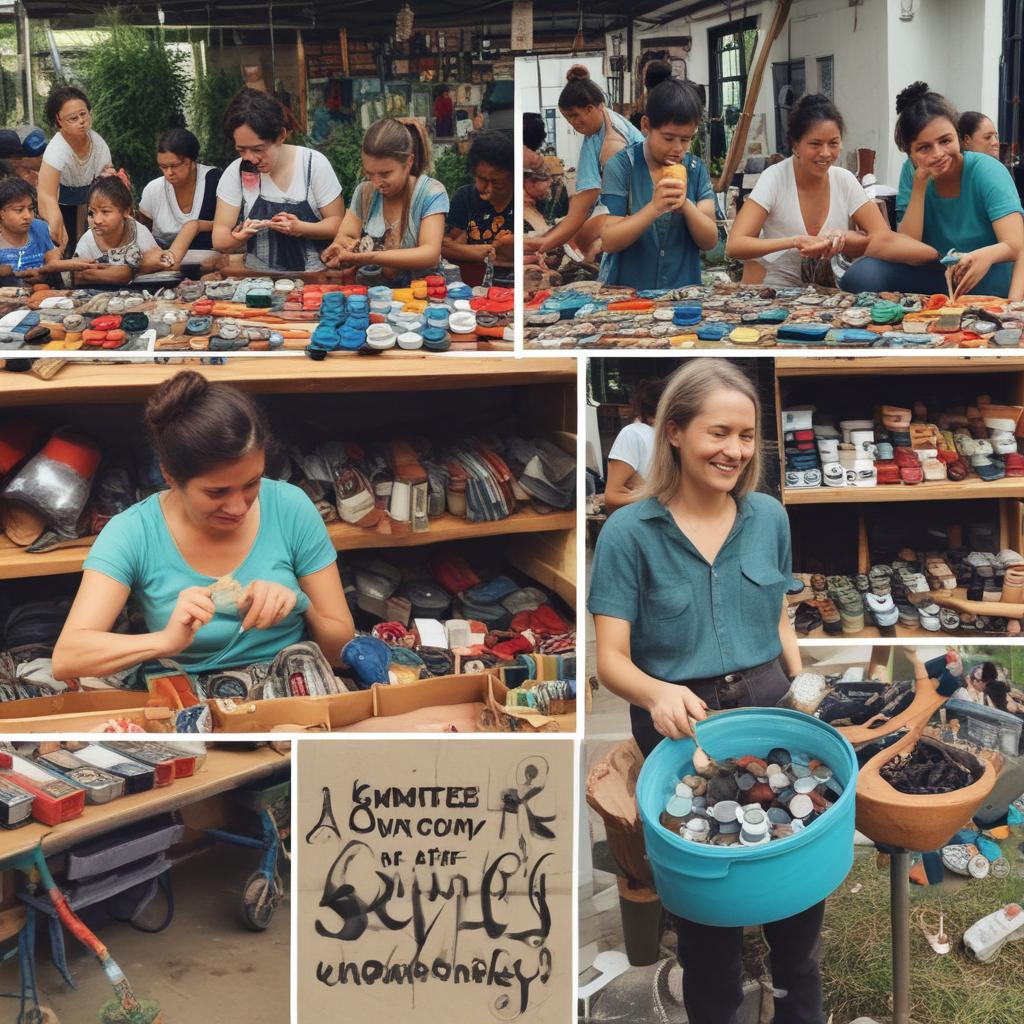Discover inspiring community stories where upcycling has transformed lives and environments
In the heart of a bustling city, a small community garden stands as a beacon of sustainability and togetherness. This garden was not always a place of lush greenery and blooming flowers. Just a year ago, it was an empty lot filled with debris and forgotten objects. It took the vision of Ella, a retired school teacher, to see beyond the mess. Ella mobilized her neighbors to clean up the space and start a garden. Not just any garden, but one that would exclusively use upcycled materials. Old wooden pallets turned into planters, discarded plastic bottles became watering systems, and worn-out tires were transformed into beautiful garden seats. This garden has not only beautified the community but also strengthened the bonds among its members, making it a thriving example of upcycling for a cause.

Upcycling, the process of transforming by-products, waste materials, or unwanted products into new materials or products of better quality or environmental value, has been gaining momentum as communities around the world embrace more sustainable practices. This concept is not only about reducing waste but also about adding value, enhancing aesthetics, and promoting community spirit. Community-driven upcycling projects have the unique ability to bring people together, fostering a sense of ownership and pride in their local areas.
One compelling example comes from a small town in Michigan, where residents came together to upcycle old and unused school buses into mobile libraries. This project not only provided children and adults with access to books but also preserved a piece of the town's history and identity. Community members of all ages donated books, helped renovate the buses and volunteered to manage the mobile libraries. The success of this project has inspired similar initiatives in neighboring towns, showing how a single project can have a ripple effect on a larger scale.
Similarly, in a coastal community in Brazil, upcycling took on an artistic form when a local artist started a project to transform the plastic waste collected from the beaches into stunning sculptures. These sculptures were then sold at community markets with the proceeds going towards sea turtle conservation efforts. Not only did this project help clean up the beaches, but it also provided a source of income for local artisans and raised awareness about marine pollution.
The stories of transformative upcycling projects are numerous and each has its unique flavor. They share common threads of creativity, community involvement, and environmental consciousness.
Key benefits of upcycling for communities include:
- Sustainable Waste Management: Upcycling significantly reduces the volume of waste sent to landfills and minimizes environmental impact.
- Economic Benefits: Many upcycling projects generate income for local communities or revitalization of local economies through tourism and the promotion of local artisans.
- Social Cohesion: Collaborative projects enhance the fabric of the community by bringing people together to work towards a common goal, fostering a sense of belonging and pride.
- Education and Awareness: These projects serve as practical examples of environmental stewardship, inspiring others to think creatively about reusing materials and protecting our planet.
Upcycling for a cause not only transforms materials but also lives and communities. As cities and towns across the globe confront the challenges of waste management and seek to enhance community life, upcycling presents a powerful tool to address these issues creatively and effectively. The story of Ella and her community garden is just one of many that illustrates how a simple idea can blossom into a movement, nurturing not just plants but also community spirit and a more sustainable future.


.jpg)





.jpg)



.png)
0 Comments